Sources, components and management in different culture systems
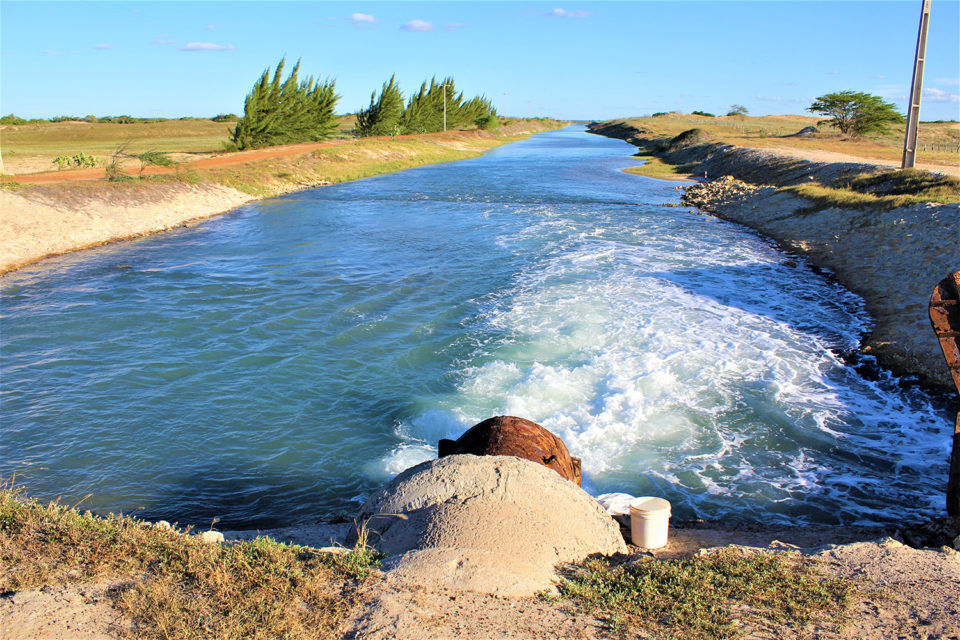
The growing global human population has resulted in a significant increase in demand for fish and fish products and led to an increased competition for the basic needs of aquaculture development, including water, land and other natural resources. Aquaculture intensification will require the use of more inputs, especially feed per unit area of land, leading to an increase in waste generation from the production systems.
Aquaculture is like any other production enterprise where there are inputs to generate products. There are always wastes in such systems, which are either unused inputs or byproducts. These wastes have little or no economic value and can have negative environmental impacts.
The waste generation from aquaculture has made its sustainability a public concern. For example, the amount of waste generated from aquaculture production in an Asian country – regardless of the type of fish culture – is so high that 1 ton of fish can generate an average of 0.8 kg of nitrogen (N) and 0.1 kg of phosphorus (P), equivalent to the waste generated daily by 73 people. This highlights the need for proper methods to ensure the sustainable intensification of aquaculture.
This article – adapted and summarized from the original publication – discusses waste production from aquaculture, its sources and components and management methods for different culture systems.
Waste sources and components: Aquafeed
Aquafeed is a critical production input in aquaculture and its level of importance depends on the type of culture technique. In an extensive system, the feed supplied to fish is mainly dependent on the environment. The fish are reared at low density over a large culture area and feed primarily on naturally occurring organisms, with some support from pond fertilization to stimulate natural productivity. In semi-intensive culture, fish are stocked at a moderate to relatively high density and rely on both food from natural production and supplemental feed from the culturists. In intensive systems, natural food production is generally not relevant and high quality manufactured aquafeeds are used targeting fast growth of fish.
Feed is a major source of waste in aquaculture systems, and this waste production depends on many factors, including its nutrient composition, method of production (extruded vs. pelleted), ratio of feed size to fish size, quantity of feed per unit time, feeding method and storage time.
Waste sources and components: Chemicals
Current aquaculture practices generally put strict limits on the use of chemicals in fish farms; however, some chemicals are still used in the form of medications, disinfectants and antifoulants. The medications are used for chemotherapeutic purposes – which include antibiotics used for prophylaxis and curative purposes, anesthetics, ectoparasiticides and endoparasiticides, and vaccines – for the treatment and control of parasites (internal and external) as well as microbial infections. Salts are mainly used to reduce stress in fish; lime is being used to treat pond bottoms for acidity during pond preparation; other chemicals considered not harmful to fish are also used.
Although these chemicals are important to fish culture, they may also have potential negative impacts on the environment. As pond water is released as effluents it flows into natural water bodies. The effect of any chemical wastes on natural water systems depends on the concentration of chemicals used, the farm size and the size of the receiving water bodies.
Waste sources and components: Pathogens
The discharge of pathogens with aquaculture effluents and wastewater may have negative effects on natural water bodies, which have their own pathogenic loads, and receiving additional loads from fish culture systems trigger stress or mortalities. Aquaculture pond effluent is typical in open-flow, semi-intensive ponds, and the use of organic fertilizers in aquaculture in many countries can increase pathogen levels. For example, four organic fertilizers used in some areas – cattle blood waste, and manure from cattle, swine and poultry – can contribute to high levels of fecal Streptococci.
There are several components of waste produced from aquaculture systems, but we will focus on those major aquaculture wastes from feed, which can be classified into solid wastes and dissolved wastes.
Waste sources and components: Solid wastes
Solid wastes are primarily derived from the uneaten feed and feces production by the cultured fish, and also from dead fish. Solid wastes can be further classified as suspended solids and settled solids. The suspended solids are fine particles suspended in the water and are the most difficult type of solids to remove from culture systems. The settled solids are larger particles that settle within a short period of time and can be easily removed from the culture column.
Solid wastes can be harmful to the fish and should be effectively removed as quickly as possible. These can clog the fish gills and lead to death, especially in the case of large settled particles. If left for a long time and allowed to decompose, these wastes lead to increases in both the total suspended and total dissolved solids. They may also increase the nitrogenous compounds and stress the cultured fish.
If solid wastes are left to remain in the aquaculture system, their aerobic bacterial activity will increase the chemical oxygen demand and biochemical oxygen demand and deplete oxygen within the culture column. In a properly managed farm – where aquafeeds are properly stored, effectively fed and the right sizes used – approximately 30 percent of the feed will become solid wastes. This can depend on the type of culture system, as it is easier to remove solid wastes from recirculating aquaculture systems than from flow through systems.
Waste sources and components: Dissolved wastes
These are products of the food metabolism in fish or decomposed, uneaten feed, and the two major components of concern are nitrogen (N) and phosphorus (P) products. These two elements are important components of protein, the main part of fish feeds. Cultured fish typically require high dietary crude protein ranging from 25 to 50 percent – with the higher protein feeds containing high amounts of nitrogen and phosphorus – with less than half of the N and P retained in the body of the fish.
The amount of nitrogen and phosphorus retained by the fish varies, with average nitrogen retained ranging from between 25 and 30 percent to 10-49 percent and 17-40 percent for phosphorus retention. Piedrahita (2003) reported that fish feces contained 3.6 to 35 percent N and 15 to 70 percent P, while the amount of N and P as excretory products were 37 to 72 percent and 1 to 62 percent, respectively. The nitrogen is mainly excreted in dissolved form as ammonia, while phosphorus is excreted as particulate matter.
Dauda, Waste Pt. 1, Table 1
| Fish species | Retained as flesh: N | Retained as flesh: P | Undigested in feces (particulate matter): N | Undigested in feces (particulate matter): P | Excreted (dissolved form): N | Excreted (dissolved form): P |
|---|---|---|---|---|---|---|
| Atlantic salmon | 49 | 36 | 14 | 55 | 37 | 9 |
| Atlantic salmon | – | 17-19 | – | 48-54 | – | 28-34 |
| Carp | 11 | 32 | – | – | – | – |
| Channel catfish | 27 | 30 | – | – | – | – |
| Sea bass | 10 | 40 | 35 | 15 | 55 | 45 |
| Sea bream | 30 | – | 10 | – | 60 | – |
| Sea bream | 19-26 | – | – | – | – | – |
| Rainbow trout | 30 | – | 13 | – | 57 | – |
| Rainbow trout | 25 | 30 | 15 | 70 | 60 | 0 |
| Tilapia hybrid | 21-22 | 18.8 | 3.6-5.4 | 19-22 | 59-72 | 60-62 |
Table 1. Nutrient (nitrogen and phosphorus) retention and excretion rates (as a percentage of the feed consumed). Modified from Piedrahita (2003 - https://www.sciencedirect.com/science/article/abs/pii/S0044848603004654).
Thus, fish do not utilize a substantial percentage of the N and P in aquafeeds, and these nutrients are eventually released into the environment as waste and can have detrimental effects on surrounding ecosystems, including an increase in both dissolved solids and total suspended solids, as well as water turbidity. It is possible that these dissolved nutrients have little or no significant effect on the cultured fish, depending on their concentrations. However, releasing culture water of poor quality as effluents may have a significant impact on the aquatic organisms in the receiving water bodies.
Nitrogen is released into culture water in the form of ammonia, which may be further decomposed to nitrite and nitrate, depending on the biological activity in the culture column. Ammonia is highly toxic to both the fish cultured in the system and those in receiving water bodies, if not treated before released into the environment. Ammonia exists in two forms, the un-ionized form and the ionized form. In water, the two exist in equilibrium at ratios determined by water temperature and pH. The un-ionized form is highly toxic, the ionized form is slightly less toxic, and the summation of the two is total ammonia nitrogen.
Cultured fish have varying tolerances to ammonia-nitrogen, which depends on fish species, age and physiological status. Warmwater fish are more tolerant than cold water fish, while adult fish are more tolerant than the fingerlings and juveniles. Ammonia is generally recommended to be below 1 mg/L in culture tanks. According to Boyd (2003), the Global Aquaculture Alliance (GAA) recommended total ammonia nitrogen (un-ionized ammonia + ionized ammonia) of 5 mg/L in the aquaculture effluents as part of the guidelines for aquaculture effluents management.
Nitrite is the intermediate product of ammonia oxidation to nitrate and can also be toxic, and levels below 0.5 mg/L are generally desirable in fish culture systems. However, nitrite is not stable and further oxidizes to nitrate.
Nitrate is the end product of ammonia oxidation and is generally regarded as safe because it is not toxic to most fish species, even at a concentration as high as 200 mg/L. However, it can have environmental impacts because it can enrich the receiving waters and, together with phosphorus, cause eutrophication [process when a body of water contains excessive nutrients which stimulate excessive growth of algae, resulting in oxygen depletion of the water body]. Fish culture systems where water is being treated for ammonia reduction, mainly in recirculating aquaculture systems, use biofilters for oxidation of ammonia to nitrate. Nitrate can accumulate over time to levels as high as 300 to 400 mg/L and, depending on the frequency of water exchange and when such water is released, will negatively impact the receiving water body.
Phosphorus in aquafeeds can be inefficiently utilized. Unlike ammonia, phosphorus is not toxic to cultured fish, but when released to the environment it enriches natural water bodies and contributes to eutrophication depending on its concentration, frequency of release and the size of the receiving water body.
Contrasted to nitrogen, which is released into the water mainly in dissolved form, a larger percentage of phosphorus is released as particulates in fish feces, and this can vary depending on the species. For example, tilapia hybrids can release large percentages of feed phosphorus (60 to 62 percent) in dissolved form through excretion. Phosphorus in culture water is primarily released as phosphate, which is an important nutrient for receiving waters along with its nitrate counterpart from nitrogen, and the two can cause eutrophication in the receiving water bodies.
Management of waste in aquaculture systems
The primary solution for managing the environmental impacts of aquaculture is the management of feed. Feed and feeding systems can effectively reduce wastes resulting from the fish feed through proper management of the inputs into the culture systems. d’Orbcastel et al. (2009) reported that a reduction in feed conversion ratio (FCR) by 30 percent in a fish farm will bring about 20 percent reduction in environmental impact from the fish culture system.
To reduce waste from aquaculture, it is important to know the nutritional requirements of the species (based on age, health and other conditions); fish biomass and size uniformity; feed quality and proper feed management and application to prevent waste.
The use of grains that are low in phytate [or phytic acid, is a naturally occurring compound in plant foods like grains, beans, seeds and nuts] is also encouraged in fish feed production to reduce the amount of phosphorus released into the water through uneaten feed or fish metabolic waste. Hardy (2010) reported that the majority of the phosphorus in plant protein cannot be utilized by fish, which are monogastric (an organism with a simple, single-chambered stomach) animals. Researchers have also suggested the increase of phytase in the feed formulation to increase bioavailability and utilization of the phosphorus in fish feed.
Various authors have noted that increased phytase (enzyme that breaks down phytate) in fish feed formulation also increased the bioavailability and utilization of phosphorus in fish diets. They also noted that this process was more effective in warm water fishes, as the impact of phytase is impaired by lower temperature in cold water fish culture.
The development of high-energy, extruded aquafeeds has also improved nutrient utilization and has reduced FCR and waste in fish feeding. These feeds can also increase the fat content of the feed without using coating methods, thus limiting the leaching of fat into culture waters. It also allows for the production of sinking and floating feeds that are uniform and maintain physical integrity longer after immersion without nutrient leaching. The moderate size and tight compaction of these high-energy feed also limits fines (dust from pellet movement and handling) and reduces the potential waste that is associated with irregular feed sizes and fines.
References available from original publication.
Now that you've reached the end of the article ...
… please consider supporting GSA’s mission to advance responsible seafood practices through education, advocacy and third-party assurances. The Advocate aims to document the evolution of responsible seafood practices and share the expansive knowledge of our vast network of contributors.
By becoming a Global Seafood Alliance member, you’re ensuring that all of the pre-competitive work we do through member benefits, resources and events can continue. Individual membership costs just $50 a year.
Not a GSA member? Join us.
Authors
-
Dr. Akeem Babatunde Dauda
Corresponding author
Laboratory of Aquaculture, Department of Fisheries and Aquaculture
Federal University Dutsinma
P.M.B. 5001, Dutsinma, Katsina State, Nigeria[109,111,99,46,108,105,97,109,103,64,107,97,98,97,100,116]
-
Abdullateef Ajadi, M.S.
Laboratory of Pathology, Department of Veterinary Pathology, Faculty of Veterinary Medicine
University of Ilorin
P.M.B. 1515, Ilorin, Nigeria -
Dr. Adenike Susan Tola-Fabunmi
National Centre for Genetic Resources and Biotechnology
Federal Ministry of Science and Technology
P.M.B. 5382, Moor Plantation, Ibadan, Oyo State, Nigeria
-
Laboratory of Aquaculture
Department of Aquaculture and Fisheries Management
University of Ibadan, Ibadan, Nigeria[101,108,111,119,110,105,107,65,32,110,117,103,101,115,117,108,79,32,97,108,111,111,121,65,32,46,114,68]
Tagged With
Related Posts
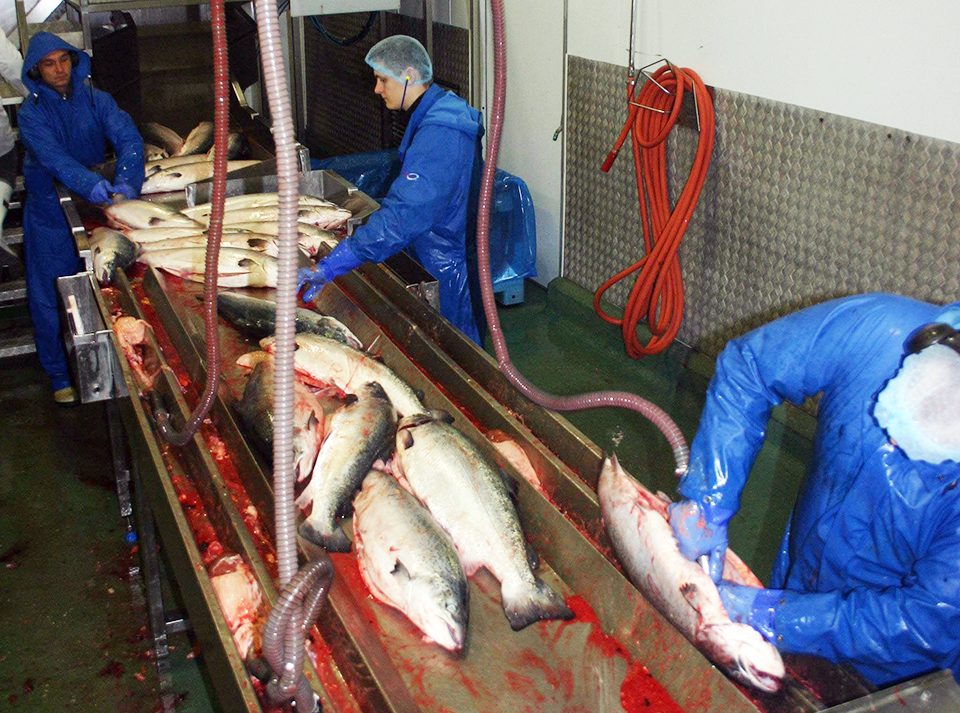
Responsibility
Aquaculture byproducts improve sustainability of seafood value chains
Tons of aquaculture byproducts are available as sources for fishmeal and fish oil to supplement the supplies obtained from fisheries. Innovative technologies are supporting more efficient use of these by-products in aquafeed.
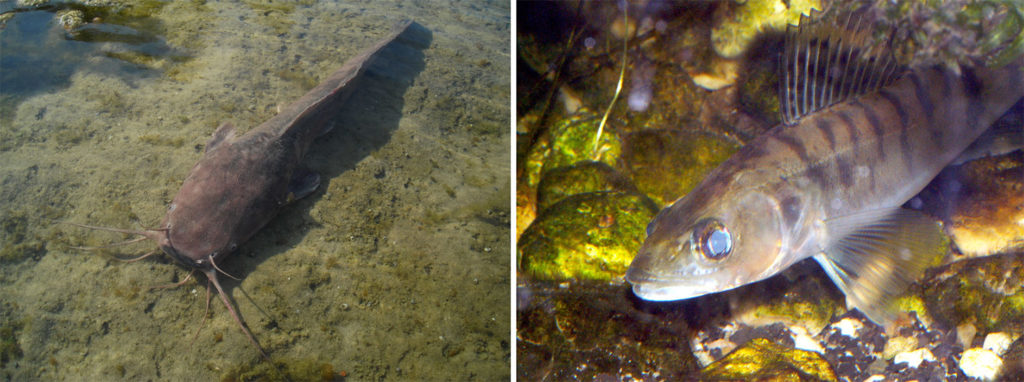
Responsibility
Integrated utilization of microalgae grown in aquaculture wastewater
A study shows that wastewater from recirculating aquaculture systems is suitable for microalgal cultivation and that sludge amendment to the wastewater increases production.
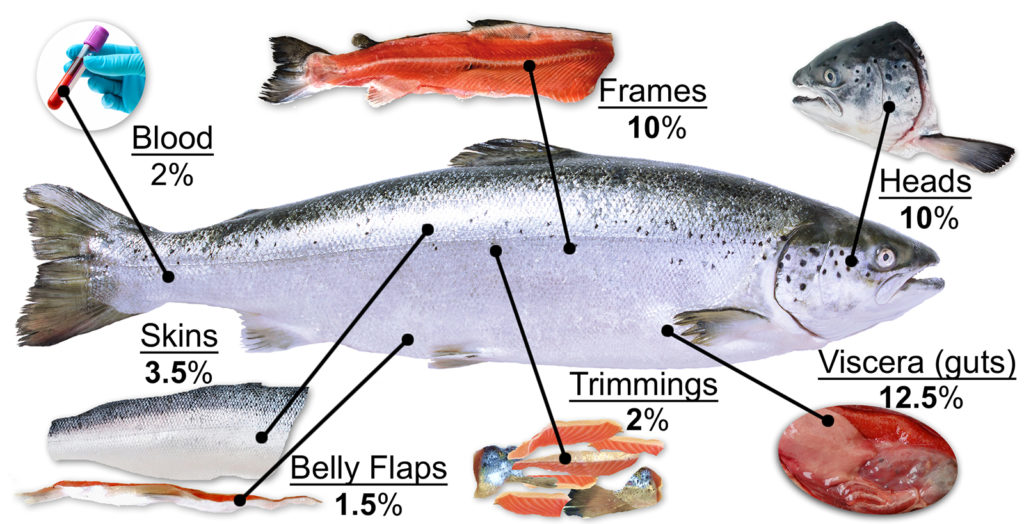
Aquafeeds
It takes guts to advance sustainability in aquaculture
With byproducts representing between 25 to 50 percent of the weight of various fish species, we need to be looking at how the entire fish is being used: even the heads, guts and skin.
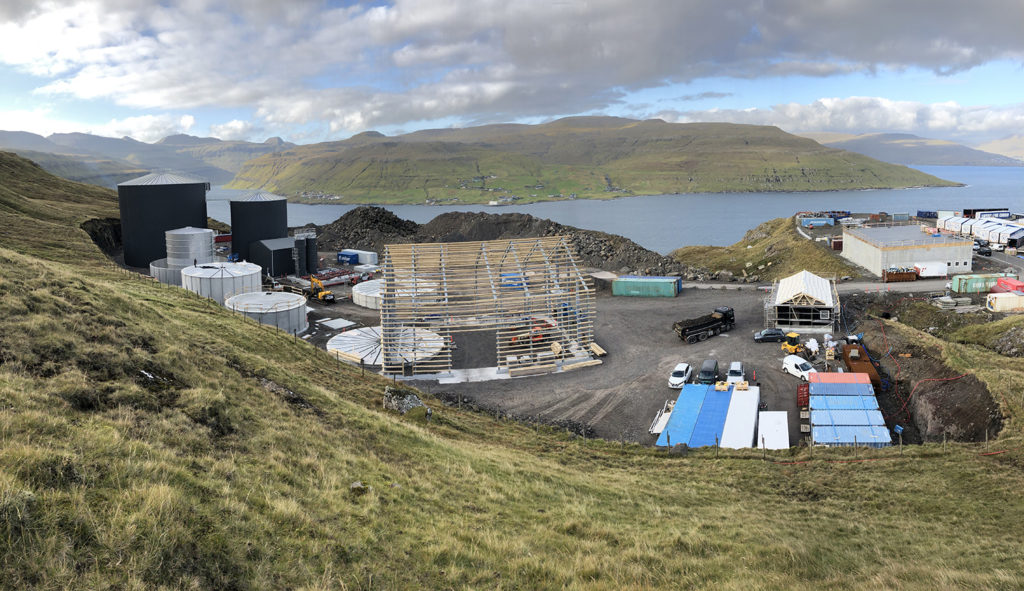
Aquafeeds
Waste not: Novel protein-recapture initiatives for aquaculture
A Norwegian fermentation technology firm utilizes volcanic matter to transform salmon waste, including feces and uneaten feed, into a high-protein powder.


